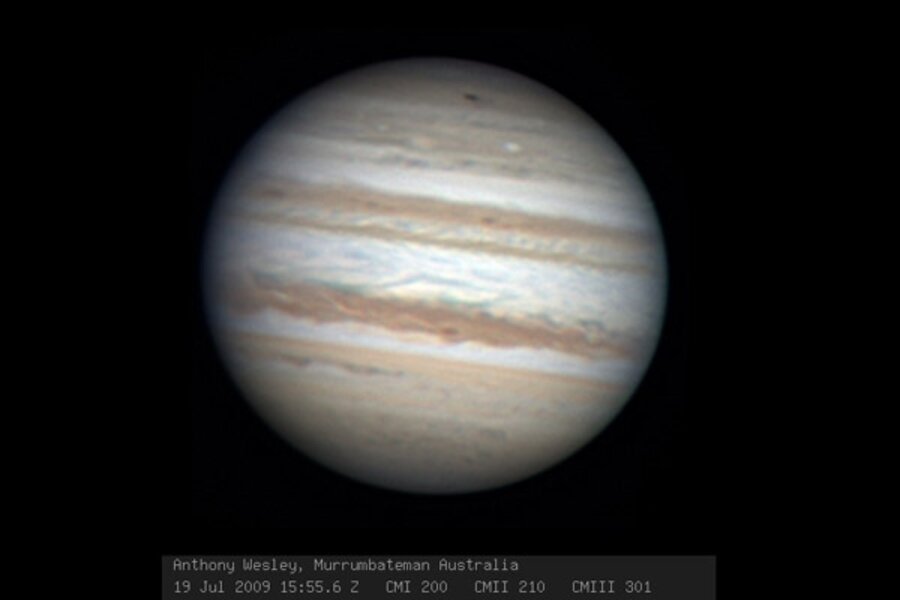Jupiter's massive scar proves how puny Earth really is
Loading...
Space stories often talk about enormous measurements. Even one light-years is so expansive that it's hard to imagine such as distance. But amateur Australian stargazer Anthony Wesley has provided a wonderful, teachable moment about how tiny Earth is the grand scale of things.
On Sunday, Mr. Wesley noticed that an unseen collision has given Jupiter a bit of a black eye. The impact, most likely from a comet, has stirred up a plume of gases, creating a black blemish. (See the top of the image above.)
A casual observer might not even notice this peck on Jupiter, but that mark is nearly the size of Earth. That little smudge could engulf most of our world.
"The size of this impact scar is extremely large and it does bear all the hallmarks of one of the intermediate collisions that occurred in the Shoemaker-Levy 9 impact," whose fragments struck Jupiter in 1994, says Leigh Fletcher, a researcher at the Jet Propulsion Laboratory, in a chat with CNET. "It's not as big as some of the largest ones, but it's certainly more dramatic than some of the smaller impacts of Shoemaker-Levy 9."
Jupiter is the largest planet in our solar system, but astronomers have found planets that are up to 70 percent larger than our giant, and stars that make Jupiter seem like a speck of dust.
For clear, visual proof of the enormity of other celestial objects, check out this animated gif. You'll quickly see how puny our solar system is.
––
For more space musings, look to the Monitor's science blog, Discoveries.





